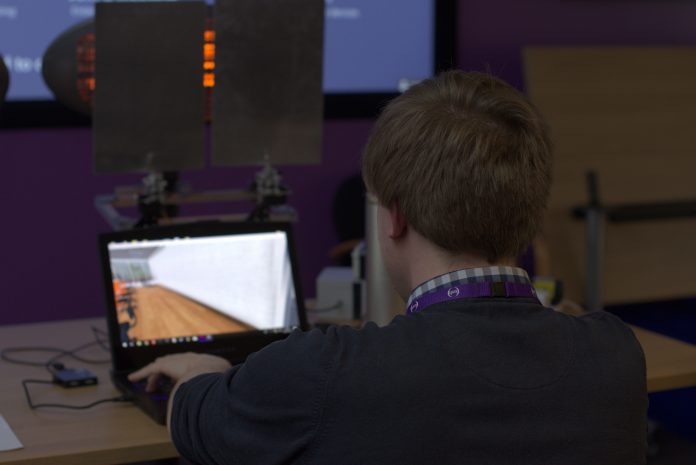A recent study from the University of Nottingham developed a multisensory virtual environment to see how workers respond in evacuation scenarios and if sensory stimuli can help to improve safety outcomes
As part of the research, funded by IOSH, two scenarios were developed: A building fire and evacuation and an engine disassembly task with a fluid leak and response actions. As participants using the software approached a virtual fire, they felt the heat from three 2kW heaters and smelt smoke from a scent diffuser. The research shows workers felt more immersed in the multisensory virtual environment than those in a comparable audio-visual virtual environment.
Previous research on human behaviour during real-world fire incidents has shown that a lack of knowledge relating to the spread and movement of fire often means that occupants are unprepared and misjudge appropriate actions.
The new research suggests that multisensory virtual environments can provide valuable insights into how workers act during emergency evacuations and where gaps in knowledge might exist.
Dr Glyn Lawson from the University of Nottingham’s Faculty of Engineering, said: “Health and safety training can fail to motivate and engage employees and can lack relevance to real-life contexts. Our research suggests that virtual environments can help address these issues, by increasing trainees’ engagement and willingness to participate in further training.
“There are also business benefits associated with the use of virtual environment training, such as the ability to deliver training at or near the workplace and at a time that is convenient to the employee.”
In the first study of behavioural validity, 52 participants were recruited and instructed to navigate towards a meeting room in the virtual environment, where they began a series of tasks. A virtual fire was started, and participants’ behaviours were recorded.
A post-trial questionnaire captured subjective ratings and verbal feedback. The results gave evidence for a greater level of belief that they were participating in a real emergency when experiencing a multisensory virtual environment with heat and smell.
A second study looked at the training effectiveness of the virtual environment. 50 participants were recruited and experienced either VE or PowerPoint training with or without multisensory simulation.
The VE training performed better than PowerPoint in several areas, including knowledge retention and ratings of engagement and attitude towards health and safety.
Mary Ogungbeje, research manager at IOSH, commented: “The wheels are turning so that virtual and smart learning is increasingly ingrained in the workplace and everyday life.
“Technology is continuously advancing and in many cases becoming more affordable, so this study gives us a taste of what’s to come.”
The multisensory simulator had a low cost of £2,765, making it an affordable option for businesses.
The research suggests VE training could offer a range of benefits for business, including increasing engagement and attitudes towards OSH training and improved retention of knowledge.
Over the course of the project the VR prototype was refined with industry and stakeholder feedback to optimise practicality and usability for workplace training contexts, and acceptability of the technology was evaluated.
The researchers conducted meetings, discussions, and visits with partners at Jaguar Land Rover and Rolls Royce, as well as meeting with the University of Nottingham’s Health and Safety advisors, to better understand how the training may be implemented in industry and seek expertise around fire safety and safe handling of hazardous chemicals.
Peter Caines, health, safety and environmental advisor at Rolls-Royce, added: “What this research demonstrates is that with the addition of more sensory inputs, such as heat and smell in the virtual environment, the training becomes a fully immersive experience and moves from a computer game experience to meaningful and effective training.
“This approach to training means that industry can really start to offer first-class training and expose trainees to real-world scenarios or the precursors to these scenarios in a safe environment.”









![[Video] Fireco: 80 new fire doors required for residential flats in London](https://www.pbctoday.co.uk/news/wp-content/uploads/2025/04/2024-06-01-Lords-view-one_1200x750_004-218x150.webp)



![[VIDEO] Making DorTrak reports easy to read with Fireco Inspecting fire doors at Fireco, firedoor technology, 2023](https://www.pbctoday.co.uk/news/wp-content/uploads/2024/04/JPZ_2364-web-218x150.jpg)
